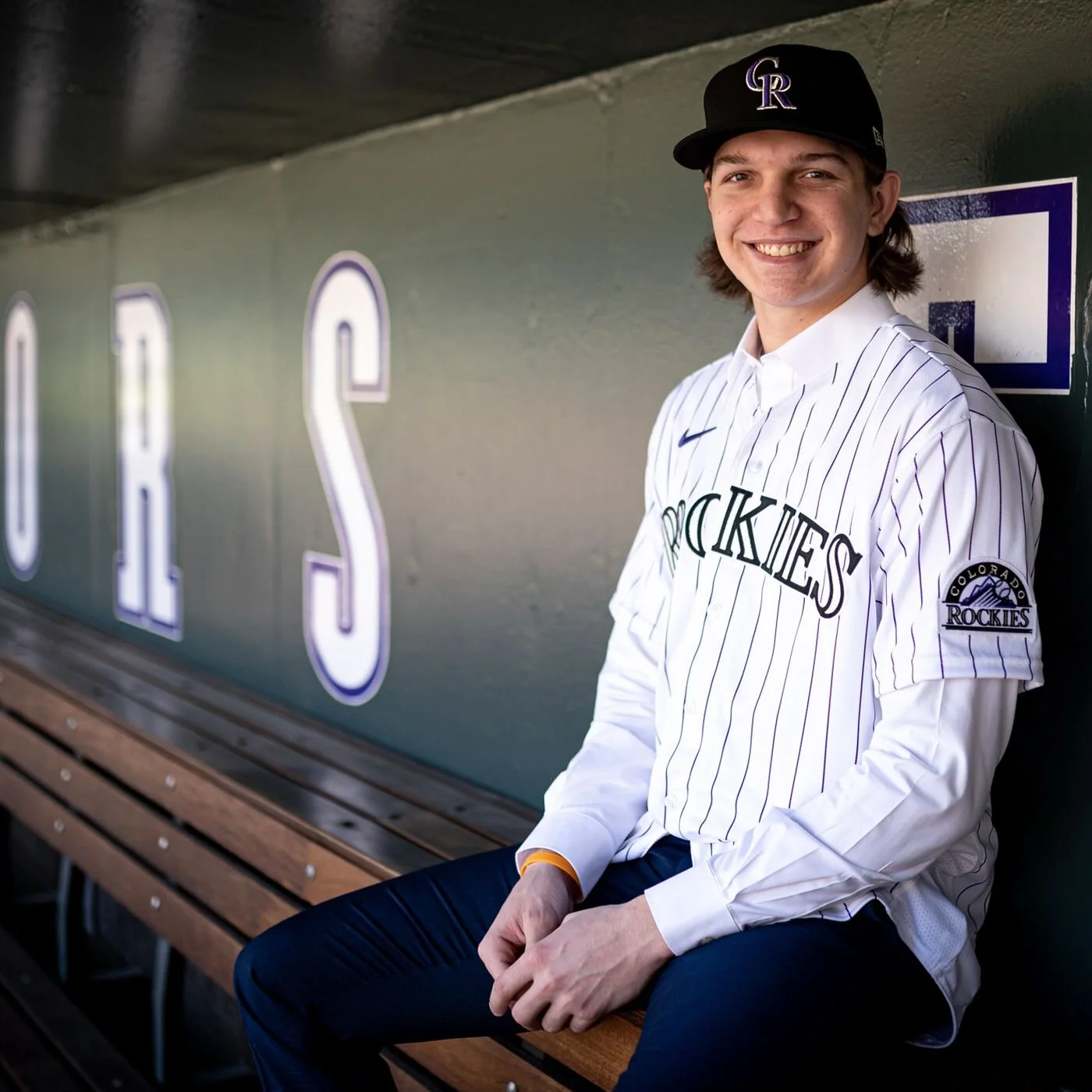DeLoach was a bit swing happy, trying at 15 of the 30 pitches he saw, and there is a fair amount of movement in his upper body load that may create some whiff issues. DeLoach was completely out of his timing when he saw breaking balls and managed for all four of his whiffs to come against sliders, despite only seeing six of them. This almost sounds like a rehash of the Marlowe report; DeLoach brings surefire power and speed with decent center field ability, but the handling of breaking balls may hamper him significantly as he looks to make the jump to the big leagues.
Nolan Jones, 1B | 1-2, 3B, BB
Jones only played the first game but made a clear impact. In his first PA, Jones drew a 5-pitch walk, flashing the plate discipline that has always boosted Jones’s prospect stock. Jones maintained a particularly tight zone all game, taking all but two of the 13 pitches he saw, lacing a triple in the 4th and lining out at 96.1 the inning before. On his triple, Jones ended up at 3rd in right about 12 seconds, including a slow start out of the box where he may have thought he was flying out and a put-on-the-brakes trot into third when it was clear he was standing up. His strides are long, and he’s a quality athlete. As of now, it’s comfortable average speed, and I’d be inclined to say it’s above-average.
For a player with long levers, the 6’4” Jones has a very controlled and simple swing. He has a very subtle knee bend in his stance with his hands chin height which allows them to remain quiet with a direct path to drive through his swing. There will always be some swing and miss because of Jones’ size, the might with which he swings, and the fact that his bat-to-ball skills are not exactly a strength of his game, but most of his strikeouts come from working counts deep. He figures to run a roughly average strikeout rate in the big leagues to match the prodigious power.
Jones looks extremely comfortable at the plate, perhaps as comfortable and confident as ever. He has dominated the Pacific Coast League, leading the league in OPS, and frankly, I’m not sure why I was able to see him over the weekend as he should be starting everyday in the Rockies lineup. Jones has primarily played right field and third base, with plenty of innings at first base and some in left field.
Aaron Schunk, 3B | 2-6, 2 2B, K
Schunk has re-emerged after a somewhat difficult return to Minor League Baseball following 2020’s absence. While the Pacific Coast League is a helper of hitters, Schunk has always possessed legitimate power and enough pure hitting ability to flash it.
Schunk was hyper-aggressive in both games, not taking any chances by waiting at the dish. He was rewarded with two doubles in game 1 at 106.5 and 108.1 MPH off the bat, respectively. The approach and lack of plus bat-to-ball skills may lead to extended slumps, but if Schunk continues to consistently mix in extra-base hits, he’ll get by as a lightning rod utility player.
At third, Schunk’s internal clock and arm strength are great assets, especially his arm which used to have him close out games in the SEC. Schunk’s nimble feet will also allow him to be a force defensively, whether at third base or second base, where he has logged extended time in recent years.
With Brendan Rodgers sidelined this year, Schunk’s resurgence gives him a chance at cracking the Rockies’ MLB roster and pick up some playing time at second base.
Riley Pint, RP | 0.2 IP, 2 H, 1 BB, 1 ER, 14 pitches (5 strikes)
As long as Pint plays, he’s worth giving attention to. The former 4th overall pick has tremendous arm talent and typically brings the best stuff in any game he enters.
Unfortunately, Pint’s body doesn’t seem linked up throughout his delivery. His plant foot lands pretty wide, opening up his hips just as his arm swing begins, leaving his arm to do an awful lot of the work, disfavoring any sort of precision.





